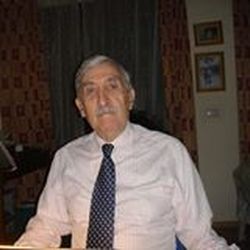The range of exciting historical fiction that is available is very wide and varied. This week the historical fiction blog tour takes us to 17th century Ceylon. Although a work of fiction, Serendepia is based on the story of the captivity of Captain Robert Knox.
The ship “Ann” did exist and was launched in London in 1645 by Captain
Robert Knox who died in captivity in Ceylon in 1659. His eldest son,
Robert Knox junior managed to escape in 1679 and returned to England, and where he was persuaded to write an account of his time there. The names of the members of his crew are true and correct in my novel. Nick, however, is entirely my invention, and by all accounts never existed. His account of his captivity in Ceylon is a more light-hearted look at what an individual member of the crew of the “Ann” might have done in these circumstances.
I regret that if you go to Sri Lanka today there are no records, or ruins to see of Robert’s captivity there for almost 20 years, apart from the book. The houses he lived in and his father’s grave have long since disappeared, although the tamarind tree held a plaque until the tree was destroyed in a storm.
However, the King’s Palace does remain, and the Temple of the Tooth in Kandy is well worth seeing. King Rajasinghe ruled Ceylon from 1635 to 1685, and his son, Kundasala, released most of the remaining prisoners on his succession. Today you can find, however, descendants of the Portuguese, Dutch and English captives who lived there and some of them with green eyes!
Oh, by the way, Daniel Defoe, who was a journalist, never went to Ceylon, but it was generally considered at the end of the 17th Century that Robert’s book was the major source of technical inspiration for his classic “Robinson Crusoe”.
Robert Knox who died in captivity in Ceylon in 1659. His eldest son,
Robert Knox junior managed to escape in 1679 and returned to England, and where he was persuaded to write an account of his time there. The names of the members of his crew are true and correct in my novel. Nick, however, is entirely my invention, and by all accounts never existed. His account of his captivity in Ceylon is a more light-hearted look at what an individual member of the crew of the “Ann” might have done in these circumstances.
I regret that if you go to Sri Lanka today there are no records, or ruins to see of Robert’s captivity there for almost 20 years, apart from the book. The houses he lived in and his father’s grave have long since disappeared, although the tamarind tree held a plaque until the tree was destroyed in a storm.
However, the King’s Palace does remain, and the Temple of the Tooth in Kandy is well worth seeing. King Rajasinghe ruled Ceylon from 1635 to 1685, and his son, Kundasala, released most of the remaining prisoners on his succession. Today you can find, however, descendants of the Portuguese, Dutch and English captives who lived there and some of them with green eyes!
Oh, by the way, Daniel Defoe, who was a journalist, never went to Ceylon, but it was generally considered at the end of the 17th Century that Robert’s book was the major source of technical inspiration for his classic “Robinson Crusoe”.

Mike Lord was born in London within the sound of Bow Bells, just as the WW2 was about to explode. He was evacuated to the country as a small boy and then was brought up in Berkshire. His family moved to various places, including three years in Singapore from 1949, which had a curious effect on his later life. Mike has spent the vast majority of his working life in developing countries in sub-Saharan Africa and Asia, and now lives and works in Vietnam.
Mike has lived and worked in Vietnam since 1997, where he lives in a provincial city with his wife, and has constant stream of visitors from the families of their seven adult children. Last year he completed an historical novel featuring the beautiful wife of the 18th century Emperor Quang Trung, who is still revered all over Vietnam.
He has written three historical novels, two thrillers and his autobiography, all of which have been self-published at Smashwords and Amazon Kindle. Two of Mike’s books have won prizes.
Under his pen name Adam Mann, Mike has written over twenty romance novels.
Mike’s books can be found on Smashwords and Amazon.com
Books written under the pen name Adam Mann can also be found on Amazon.
If you want to know more about Mike Lord you can find him on www.lordmaity.com and www.adammannauthor.com
Books written under the pen name Adam Mann can also be found on Amazon.
If you want to know more about Mike Lord you can find him on www.lordmaity.com and www.adammannauthor.com


Recent Comments